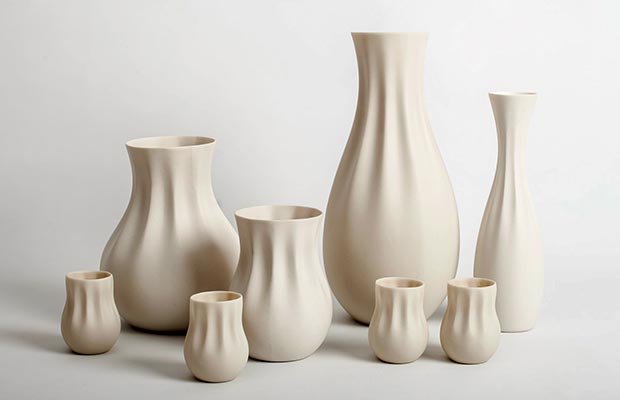Project #4
This project has three components:
- A Looking Outwards report, due Monday, March 25th, presenting/researching at least two examples of prior work related to your concept.
- A check-in blog post, due Wednesday, April 3rd.
- A documented project, due Wednesday, April 10th.
There are several options for this project:
- Telematic Artwork: A networked system that allows people in different locations (and optionally, at different times) to communicate/collaborate in a new way.
- Interactive Manufactory: A software system that produces real-world objects, articulated, at least in part, by the actions of a person or people.
- Tricorder: A system for capturing or measuring data from people in a new way.
- Visualization: A system which allows people to interactively zoom, sort, filter, and/or query a large dataset which interests you.
Note: The Manufactory, Tricorder, and Visualization prompts are offered as options to students who happen to find those prompts more productive. However, practical code resources will only be provided for Telematic Art, and contextual lectures will be provided for the Telematic Art and Manufactory concepts.
Option 1. Telematic Artwork
A networked system that allows people in different locations (and optionally, at different times) to communicate/collaborate in a new way.
One significant thread in new-media practices involves inventing a new modality of communication, as the core proposition of an artwork. In other words, certain artworks exist to ask the question: “What if people could communicate (or sense each other) in such-and-such new way?” For example, Rafael Lozano-Hemmer’s The Trace (1995) asks, “what if people could sense each others’ presence, through intersecting beams of light?”, while Jingwen Zhu’s Real Me (2015) asks, “what if text-based chat could also communicate physiological indicators of emotional stress, such as leg jiggling?” Some works use this approach to question the nature of digital communication itself. For example, Maddy Varner’s experimental chatroom, Pasties (2018), asks, “what if people exclusively communicated by copy-pasting?” These systems not only ask a question, but provide a provisional answer in the form of working, open-ended prototypes.
In this prompt, you are asked to develop a multi-user, networked environment that allows people to communicate or collaborate with each other in a new way.
Your system could facilitate language-based interactions like typing, speaking or reading. It might allow people to creatively collaborate, visually, through a novel drawing or construction activity. Or, it could convey nonverbal aspects of presence, such as gestures, in order to explore what Heidegger calls Dasein, or “being there together”.
Note that while a game could be a legitimate response to the assignment, the emphasis in this project is on communication and/or collaboration. You should be able to answer questions as to how your project supports a new mode of communication or collaboration.
- Develop your project.
- Test your project. Watch two or more people use your system. Make some observations. What did you observe?
- Create a blog post on this web site, to document your project.
- In your blog post, embed an animated GIF (or screenshot image) of your project, showing what the interaction is like.
- Embed a brief (under 1 minute) video of your project, ideally with a narration that explains what it is, why someone may find it interesting, and how it is used.
- Summarize your project in a single brief sentence. How would you describe it in just a few words?
- Write a paragraph or two (~100-150 words), reflecting on your process, and evaluating your product. In writing about your project, please discuss your approach to at least one of the following design issues:
- Network model: One to many / many to one / many to many / one to one
- Asynchronous vs. synchronous
- Equal roles vs. complementary roles. Is one person special?
- Anonymity and/or intimacy
- Local vs. remote collaboration (i.e. people in same room vs. people far away)
- Criticality and/or self-reflexive awareness of the nature of networked communication
- Document your process by embedding images of paper sketches from your notebook. These images could be as simple as photos of your sketches, captured with your phone.
- Label your project’s blog post with the WordPress category, 04-Telematic.
- Title your project’s blog post with the title, nickname-telematic.
Option 2. Interactive Manufactory
A software system that produces real-world objects — articulated, at least in part, by the actions of a person or people.
You are asked to create a software system which generates real-world objects in response to the actions of a person. More specifically, your program should generate a family of objects, which are all parameterized in the same way, but which differ when their parameters are set to different values (at least partially) through the actions of a user/guest/participant. The objects generated by your program should be suitable, at least in principle, for digital manufacture and rapid prototyping in the real world.
Disrupting the depersonalizing effects of mass production can be liberating. If you are hunting for a concept, it may be helpful to think of things in the world around us which are mass-produced, but which could be personalized.
Give consideration to the potential of your parametric object to operate as a cultural artifact. How might it somehow attain special relevance by generating things which address a real human need or interest? Does your generative object have a perspective? Is it possible for an object to be critical? Tactical? (What could those terms mean when applied to generative objects?) Is it a tool? Garment? Decoration? Can it be funny, surprising or unexpected?
If you really have absolutely no idea what to do, write some software that generates vases.
